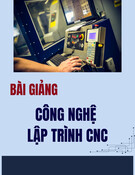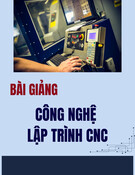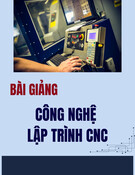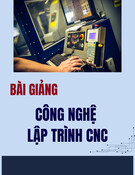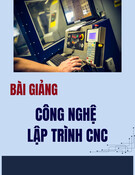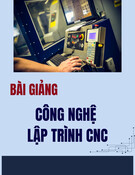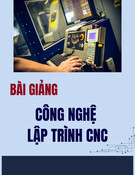Journal of Materials Processing Technology 153–154 (2004) 1026–1032
Analysis of the influence of EDM parameters on surface quality, MRR and EW of WC–Co I. Puertas∗, C.J. Luis, L. Álvarez
Department of Mechanical Engineering (Manufacturing Engineering Section), Public University of Navarre (Spain), Campus de Arrosad´ıa s/n, Postal Code 31006 Pamplona, Navarre, Spain
Abstract
The adequate selection of manufacturing conditions is one of the most important aspects to take into consideration in the die-sinking electrical discharge machining (EDM) of conductive ceramics, as these conditions are the ones that are to determine such important characteristics as: surface roughness, electrode wear (EW) and material removal rate, among others. In this work, a study was carried out on the influence of the factors of intensity (I), pulse time (ti) and duty cycle (η) over the listed technological characteristics. The ceramic used in this study was a cemented carbide or hard metal such as 94WC–6Co. Approximately 50% of all carbide production is used for machining applications but cemented carbides are also being increasingly used for non-machining applications, such as: mining, oil and gas drilling, metal forming and forestry tools. Accordingly, mathematical models will be obtained using the technique of design of experiments (DOE) to select the optimal machining conditions for finishing stages. This will be done only using a small number of experiments. © 2004 Elsevier B.V. All rights reserved.
Keywords: EDM; Surface roughness; DOE
1. Introduction
materials. The threshold of electrical resistivity for these materials is considered to be between 100 and 300 (cid:2) cm [2,3].
Electrical discharge machining (EDM) is a non-traditional manufacturing process based on removing material from a part by means of a series of repeated electrical discharges (created by electric pulse generators at short intervals) be- tween a tool, called electrode, and the part being machined in the presence of a dielectric fluid [1]. At the present time, EDM is a widespread technique used in industry for high-precision machining of all types of conductive materi- als such as: metals, metallic alloys, graphite, or even some ceramic materials, of whatsoever hardness.
In this work, a study focused on the die-sinking EDM of a ceramic material such as cobalt-bonded tungsten car- bide (WC–Co), whose field of applications is in constant growth, was carried out. Consequently, an analysis on the influence of intensity, pulse time and duty cycle over tech- nological variables such as: surface roughness, electrode wear (EW) and material removal rate was performed. This was done using the technique of design of experiments (DOE) and techniques such as multiple linear regression analysis. The combined use of these techniques has al- lowed us to create both first and second-order models, which make it possible to explain the variability associated with each of the technological variables studied in this work.
2. Experimental
∗ Corresponding author.
E-mail address: inaki.puerta@unavarra.es (I. Puertas).
In spite of their exceptional mechanical and chemical properties, ceramic materials have only achieved partial ac- ceptance in the field of industrial applications, due to the difficulties of processing and the high cost associated with their manufacture. Over the past few years, the advances in the field of EDM made the application of this technology available for the manufacture of conductive ceramic ma- terials. In line with current knowledge, the main inconve- nience when applying the EDM technology to the treatment of ceramic materials is the electrical conductivity of these
0924-0136/$ – see front matter © 2004 Elsevier B.V. All rights reserved. doi:10.1016/j.jmatprotec.2004.04.346
In this section, there will be a brief description of the equipment used to carry out the EDM experiments, along with the ceramic material used and its dimensions. Also, the design factors used in this work will be outlined.
I. Puertas et al. / Journal of Materials Processing Technology 153–154 (2004) 1026–1032
1027
Fig. 1. Die-sinking EDM machine used.
Fig. 2. Gripping and jet flushing system used.
2.1. Equipment used in the experiments
The equipment used in order to carry out the EDM of tungsten carbide was a die-sinking EDM machine of type ONA DATIC D-2030-S. Fig. 1 shows a photograph of this equipment.
thermal conductivity of 100 W/m K and a thermal expansion coefficient of 4.3 × 10−6 K−1, at a temperature of 200 ◦C. At present, although approximately 50% of the manu- facturing of this type of cemented carbides is used in ma- chining applications, the number of alternative applications is quickly growing. Among these alternative applications, could be highlighted: mining of metallic and non-metallic materials, construction, transport and drilling in oil and gas installations, metallic materials forming, structural compo- nents and, finally, as material for tools in the field of forestry engineering.
The EDM machine was equipped with a magnetic grip in order to hold the parts in place, but, due to the kind of material in question, a mechanical grip was finally used instead. In Fig. 2, a photograph illustrating the whole fixture system employed in the experiments is shown. In addition, in the same figure, the type of flushing used for the EDM experiments in order to assure an adequate removal of the debris from the work gap is shown. In this case, due to its simplicity and the shallow machining carried out in these experiments, jet flushing was selected. The pressure used for the dielectric fluid was 20 kPa.
The samples of tungsten carbide were ground sheets of the following dimensions: 50 mm × 50 mm × 4 mm. More- over, the electrodes used were made of electrolytic copper (with negative polarity) given that, according to the biblio- graphic sources consulted [4,5], it is the most highly recom- mended material for the EDM process of tungsten carbide. Furthermore, the copper electrodes were selected in a pris- matic form with a transverse area of 8 mm × 12 mm. 2.2. Material used in the experiments
2.3. Design factors and response technological variables analysed
There are a large number of design factors to be consid- ered within the EDM process, but in this work we have only considered the level of the generator intensity (I), pulse time (ti) and duty cycle (η) [1,6].
Accordingly, the ceramic material used in this case was a 94WC–6Co, which means that it has a proportion of cobalt of 6%. This material was principally developed in order to be used as a cutting tool, due to its excellent hardness prop- erties (HRA 92 for 94WC–6Co). Furthermore, this material possesses a high compressive strength (5450 MPa), as well as good resistance to wear and oxidation at high tempera- tures. On the other hand, the composite material made up of tungsten carbide and cobalt has a high resistance to thermal shock and, consequently, it is capable of coping with rapid changes of temperature. In the case of 94WC–6Co, this has a The surface roughness parameter selected as response variable, defined in accordance with UNE-EN-ISO 4287: 1999, was the arithmetic average roughness of the roughness profile, that is to say, the Ra parameter.
1028
I. Puertas et al. / Journal of Materials Processing Technology 153–154 (2004) 1026–1032
Table 2 Design of experiment matrix for the second-order model
η
I
EW (%) MRR
ti ((cid:1)s)
Ra ((cid:1)m)
Number of experiment
(mm3/min)
When carrying out the roughness measurements over the ceramic sheets, a phase corrected 2CR filter for the ru- gosimeter, along with a length of measurement or evaluation of 6.4 mm (8 mm × 0.8 mm), were selected. The values of the surface roughness parameter for each experiment were obtained from the arithmetic mean of the values of the mea- surements taken following three parallel directions and in an equidistant distribution over the total area subjected to the EDM process.
In addition to surface roughness, other very important response variables which are of interest when studying EDM processes, are material removal rate (MRR) and electrode wear, as shown in Eqs. (1) and (2). MRR = volume of material removed from part (1) time of machining
3 5 3 5 3 5 3 5 3 5 4 4 4 4 4 4 4 4
10.0 10.0 50.0 50.0 10.0 10.0 50.0 50.0 30.0 30.0 10.0 50.0 30.0 30.0 30.0 30.0 30.0 30.0
0.4 0.4 0.4 0.4 0.6 0.6 0.6 0.6 0.5 0.5 0.5 0.5 0.4 0.6 0.5 0.5 0.5 0.5
0.66 1.24 0.66 1.93 0.65 1.37 0.64 2.02 0.64 1.75 1.11 1.73 1.43 1.54 1.43 1.34 1.39 1.42
36.51 15.32 71.58 12.09 35.25 15.54 71.77 11.09 66.41 11.02 17.34 15.21 14.93 13.35 14.29 14.15 14.08 14.09
0.055 0.248 0.012 0.202 0.090 0.428 0.020 0.318 0.026 0.279 0.236 0.155 0.147 0.246 0.193 0.192 0.194 0.194
1 2 3 4 5 6 7 8 9 10 11 12 13 14 15 16 17 18
(2) EW = volume of material removed from electrode volumen of material removed from part
Although other ways of measuring MRR and EW do exist, in this work the material removal rate and electrode wear values have been calculated by the weight difference of the sample and electrode before and after undergoing the EDM process.
(2 A) and 5 (6 A). On the other hand, levels of 10 and 50 (cid:1)s as well as levels of 0.4 and 0.6 were selected for pulse time and duty cycle, respectively. The reason for using levels of intensity instead of intensities is due to the requirements of the programming of the EDM equipment. 3. Design of the experiments
Table 2 shows the design matrix resulting from the type of experiment selected in the case of the second-order model, as well as the observations for the case of the three response variables which are considered, where the intensity values 3, 4 and 5 are equivalent to 2 A, 4 A and 6 A, respectively. The design matrix for the first-order model is obtained by merely eliminating the rows corresponding to the star points of the model, which means rows 9–14, inclusive.
4. Analysis of surface roughness
The design which was finally chosen was a factorial de- sign 23 with four central points [7], which provide protec- tion against curvature, consequently carrying out a total of 12 experiments. For the case of the response variables which were not adequate for the previous model, this was widened by the addition of six star points, giving a central compos- ite design made up of the star points situated in the centres of the faces. So, the case of the second-order model turned out to be made up of a total of 18 experiments, the previous 12 from the first-order model plus the six star points. The graphs presented here were done using STATGRAPHICS® plus, Version 5.0.
Table 1 Factors and levels selected for the experiments
A first-order model was proposed for the response vari- able of the Ra parameter, but this was rejected as a re- sult of the variance analysis for the proposed curvature test. On the other hand, a value of 0.9843 is obtained for the R squared statistic (R2) and the adjusted R squared statis- tic ( ¯R2) is 96.67%, for the case of the new second-order model. Moreover, the equation for this model is shown in Eq. (3): Table 1 presents the relationship between the design fac- tors and their corresponding selected variation levels, taking into account that the study wanted to focus on the finish- ing machining stages, owing to the influence which a good surface quality, in the case of ceramics, has over properties such as fatigue strength and wear. Consequently, the inten- sity levels chosen for the case of the intensity factor were 3
Factors
Levels
−1
+1
(3) − 0.003125tiη + 2.7619η2 Ra = −3.04141 + 2.19567I − 0.0168304ti − 3.61815η −0.262381I2 + 0.0084375Iti + 0.3125Iη −0.0000934524t2 i
3 10
I ti ((cid:1)s) η
0.4
5 50 0.6
where the values of the considered variables have been spec- ified according to their original units.
Fig. 3 shows the Pareto chart for the effects correspond- ing to the Ra parameter. As can be clearly seen, all the bars of the diagram which go beyond the vertical line correspond
I. Puertas et al. / Journal of Materials Processing Technology 153–154 (2004) 1026–1032
1029
Fig. 3. Pareto chart for the effects of Ra.
Fig. 5. Estimated response surface of Ra vs. I and ti.
Fig. 6. Estimated response surface of Ra vs. I and η.
to the effects which are statistically significant, for a con- fidence level of 95%. Therefore, there are four significant effects which, in descending order of contribution, are: the factor of intensity, the factor of pulse time, the interaction of these two factors and, finally, the pure quadratic effect of intensity.
As can be seen in Fig. 4, the values of the Ra parame- ter increases significantly with the factor of intensity, which also happens to be the most significant effect of all. On the other hand, the Ra parameter also tends to increase with the factors of pulse time and duty cycle, this last factor, as was seen earlier, not being significant for the 95% con- fidence level. The performance of the Ra parameter faced with the three design factors is what would be expected, a priori, as generally, the increase of energy in each pulse, be it through an increase in the value of intensity or pulse time, or the decrease in pause time, which is equivalent in this case, to an increase in the value of duty cycle, usu- ally leads to a poorer surface roughness of the manufactured parts. the considered work interval. Furthermore, it can also be observed that the Ra parameter tends to increase when the pulse time factor is increased, especially for high values of intensity. The previous tendency of growth for this factor becomes less intense as we move towards lower values of intensity, with the Ra parameter actually decreasing slightly, after reaching a peak, for values close to the low level of intensity (I = 3).
Fig. 5 shows the estimated response surface for the Ra parameter, according to the design parameters of intensity and pulse time, whilst the duty cycle factor remains constant in its central value of 0.5. Fig. 6 shows the estimated response surface of the Ra pa- rameter according to the factors of intensity and duty cycle, whilst the pulse time factor remains constant in its central level value, which is 30 (cid:1)s.
As has been previously pointed out, this figure shows us the important influence that the design factor of intensity possesses over the Ra parameter, so that when intensity is increased, the Ra parameter also tends to increase apprecia- bly at least up to a maximum value, after which it tends to decrease, for low values of the pulse time factor and within
As has been previously stated, the graph in Fig. 6 shows the great influence that the intensity factor has over the Ra parameter, in such a way that it tends to increase significantly with the intensity factor, for any value of duty cycle and within the considered work interval. Furthermore, the graph also shows the lack of influence that, in this case, duty cycle has over the Ra parameter.
5. Analysis of electrode wear
Fig. 4. Graph of the main effects of Ra.
A first-order model was proposed for the response vari- able of electrode wear such as the one proposed for the case of the Ra parameter, but this was rejected after observ- ing the results for the curvature test. With the second-order model, the values obtained for the R squared statistic and the adjusted R squared statistic were 0.9692 and 0.9345, re- spectively. The equation for the adjusted model is shown in
1030
I. Puertas et al. / Journal of Materials Processing Technology 153–154 (2004) 1026–1032
Fig. 9. Estimated response surface of EW vs. I and ti.
Fig. 7. Pareto chart for the effects of EW.
Eq. (4):
EW = 315.152 − 181.578I + 2.37548ti + 269.637η
(4) + 0.0144416tiη − 274.99η2 +21.8262I2 − 0.495464Iti + 0.370479Iη −0.00153199t2 i
Fig. 10. Estimated response surface of EW vs. I and η.
where the values of the considered variables have been spec- ified according to their original units and, as in the previous case, no kind of simplification has been done.
increase in pulse time is usually associated with a decrease in electrode wear.
Fig. 7 represents the Pareto chart for the effects corre- sponding to the EW response variable. As can be clearly observed in this diagram, there are four significant effects which, in descending order of significance, are: the main ef- fect of intensity, the pure quadratic effect of intensity, the interaction effect of intensity and pulse time and, finally, the main effect of pulse time, whilst the rest of the factors are not significant for a confidence level of 95%.
Furthermore, the value of EW tends to increase with duty cycle up to a maximum value, situated approximately at its central value, after which it starts to decrease, although, on the other hand, the effect of this factor is not statistically significant for the considered confidence level. In general practice with other types of materials, an increase in duty cycle reducing the pause time is usually associated with a reduction in electrode wear as well.
Fig. 8 shows the graph of the main effects for each of the factors which have been considered in this study. As can be seen in Fig. 8, the most influential factor over EW is in- tensity, in such a way that the value of the wear decreases greatly when intensity is increased, at least down to a min- imum value after which the value of EW begins to grow. This tendency is what would be expected, a priori, as higher values for the intensity factor usually lead to lower values of electrode wear.
Fig. 9 shows the estimated response surface of electrode wear, varying the factors of intensity and pulse time. As can be clearly seen in this figure, the wear value tends to decrease with the intensity factor down to a minimum value after which it tends to increase. Moreover, this minimum value of wear moves gradually towards higher intensity values as the pulse time value increases, within the variation interval which was considered in this work. With regard to the pulse time factor, as it is shown in the above figure, the value of EW tends to increase when this factor is increased, within the studied work interval. This tendency is exactly the opposite of what was expected, as an
Fig. 10 shows the estimated response surface of EW in function of the factors of intensity and duty cycle, whilst the pulse time factor remains constant in its central value of 30 (cid:1)s. This figure shows the limited influence that duty cycle possesses over electrode wear for any value of intensity, if the value of pulse time is fixed in its central level.
Fig. 8. Graph of the main effects of EW.
6. Analysis of material removal rate
For the response variable of material removal rate (MRR), initially a first-order model was proposed, but this was re- jected after considering the results obtained for the model
I. Puertas et al. / Journal of Materials Processing Technology 153–154 (2004) 1026–1032
1031
Fig. 11. Pareto chart for the effects of MRR.
Fig. 13. Estimated response surface of MRR vs. I and ti.
curvature test. The second-order model gives a value of 0.9980 for the R squared statistic and the adjusted R squared statistic is 0.9958. The equation of the adjusted model for the MRR variable is shown below in Eq. (5):
MRR = −0.308324 + 0.261212I + 0.00100986ti
Fig. 14. Estimated response surface of MRR vs. I and η.
(5) −1.50491η − 0.0354634I2 − 0.000262867Iti +0.314985Iη + 0.000018467t2 i −0.00562663tiη + 0.852392η2
where the values of the considered variables have been spec- ified according to their original units.
be expected a priori, as in general, when pause time tends to decrease whilst pulse time remains constant, which is equivalent in this case to increasing the value of duty cycle, material removal rate tends to increase.
Fig. 11 shows the Pareto chart for the effects correspond- ing to the MRR response variable. As can be seen in this figure, there are six significant effects which, in descending order of significance, are: intensity, duty cycle, pulse time, the interaction of the first two ones, the quadratic effect of intensity and, finally, the interaction of pulse time and duty cycle, all the other considered effects not being significant at a 95% confidence level.
Finally, regarding its performance versus pulse time, ma- terial removal rate tends to decrease as pulse time is in- creased. This behaviour does not fit in entirely with what might have been expected at first as, generally, when the pulse time factor increases, the MRR parameter usually in- creases up to a maximum value after which it starts to de- crease.
Fig. 12 shows the graph of the main effects for each of the design factors. As can be clearly seen in the graph above, the factor of intensity is the one which most affects the MRR variable, so that when it increases, the value of material removal rate also tends to increase. This tendency coincides exactly with what would be expected a priori, based on the experience acquired with other types of materials. Fig. 13 shows the estimated response surface of MRR, varying intensity and pulse time. As can be seen in this figure, the MRR response variable tends to increase, for any value of the pulse time factor, within the work interval, when intensity is also increased.
As for duty cycle, the MRR response variable also tends to increase when this factor is increased, within the considered work interval. This agrees with the tendency which would
Fig. 14 shows the estimated response surface of MRR in relation to the factors of intensity and duty cycle, whilst the pulse time value remains constant in its central value of 30 (cid:1)s. This figure shows that the value of MRR in- creases when intensity increases and, moreover, this in- crease becomes more pronounced as the value of duty cycle rises, due to the existence of an interaction between the two factors.
Fig. 12. Graph of the main effects of MRR.
7. Conclusions
In this present work, modelling procedures of some of the most important parameters within the process of die-sinking EDM of conductive ceramic materials were carried out. The
1032
I. Puertas et al. / Journal of Materials Processing Technology 153–154 (2004) 1026–1032
ceramic chosen in this case was a cobalt-bonded tungsten carbide (94WC–6Co), due to its growing range of applica- tions not only in the field of cutting tools but also in some other non-machining ones. and pulse time. In order to be able to obtain low values of electrode wear, values of the intensity factor close to its central value (that is to say, I = 4) or slightly higher should be used along with low values for pulse time, within the considered work interval.
With this work, it has been confirmed that the technique of design of factorial experiments, combined with techniques of multiple linear regression, can be successfully applied to modelling the functions which depend on various variables. This has been carried out in an efficient way, as a great number of experiments have not been necessary.
Finally, in the case of material removal rate, it was ob- served that the most influential factor was once again inten- sity, followed by the duty cycle factor, the pulse time factor and the interaction effect of the first two. The value of mate- rial removal rate increased, as would logically be expected, when intensity and duty cycle were increased, whilst an in- crease in pulse time brought about a decrease in MRR.
Therefore, in order to obtain high values of material re- moval rate for the case of tungsten carbide, within the work interval considered in this study, one should use, above all, high values for intensity and duty cycle. Furthermore, al- though to a lesser extent, low values of the pulse time factor should also be used.
[1] Poco Graphite Inc., EDM Technical Manual, Texas, 1994. [2] N.L. Mordecai, T.C. Lee, J. Huddleston, Developments in spark ero-
sion of ceramics, Br. Ceram. Trans. 94 (1) (1995) 21–24.
[3] J.H. Zhang, T.C. Lee, W.S. Lau, Study on the electro-discharge ma- chining of a hot pressed aluminum oxide based ceramic, J. Mater. Process. Technol. 63 (1997) 908–912.
References In order to carry out this study, some technological vari- ables such as: surface roughness (evaluated by means of the Ra parameter), the volumetric electrode wear and mate- rial removal rate (MRR) were selected. These technological variables were studied in relation to design factors such as: the level of intensity supplied by the EDM machine genera- tor (I), pulse time (ti) and duty cycle (η). In all the response variables used in this work, second-order models were se- lected as the curvature tests for the first-order models showed evidence of the existence of pure quadratic effects for the factors.
[4] S.H. Lee, X.P. Li, Study of the effect of machining parameters on the machining characteristics in electrical discharge machining of tungsten carbide, J. Mater. Process. Technol. 115 (2001) 344–358.
[5] X. De Maidagan, J.A. Sánchez, J.I. Llorente, R. Lenzen, T. Nöthe, Electroerosión: Llave para un crecimiento real de la aplicación de las cerámicas? IMHE, June/July, 2000, pp. 43–48.
In the case of the Ra parameter the most influential fac- tors were intensity, followed by the pulse time factor, while the duty cycle factor was not significant at the considered confidence level. When either intensity or pulse time were increased, the roughness value also increased. Furthermore, a significant interaction effect was observed between the in- tensity and pulse time factors.
[6] I. Puertas, C.J. Luis, A study on the machining parameters optimisation of electrical discharge machining, in: J.M. Torralba (Ed.), Proceedings of the International Conference on Advanced Materials and Processing Technologies (AMPT), Leganés, Spain, 2001, pp. 1173–1180.
[7] D.C. Montgomery, Design and Analysis of Experiments, Wiley, New
York, 2001.
Therefore, in order to obtain a good surface finish in the case of tungsten carbide, low values should be used for both intensity and pulse time. Another way of obtaining low roughness values, although higher than in the previous cases, is to combine the use of high values of intensity and low values of pulse time, within the considered work interval.
In the case of electrode wear, it was also seen that the intensity factor was the most influential, followed by its own pure quadratic effect and the interaction effect of intensity


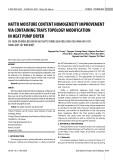
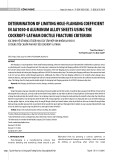

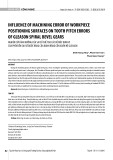

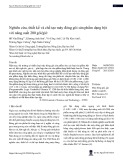
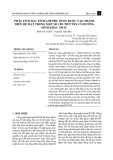
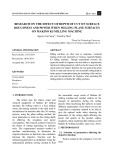


![Bài tập tối ưu trong gia công cắt gọt [kèm lời giải chi tiết]](https://cdn.tailieu.vn/images/document/thumbnail/2025/20251129/dinhd8055/135x160/26351764558606.jpg)




